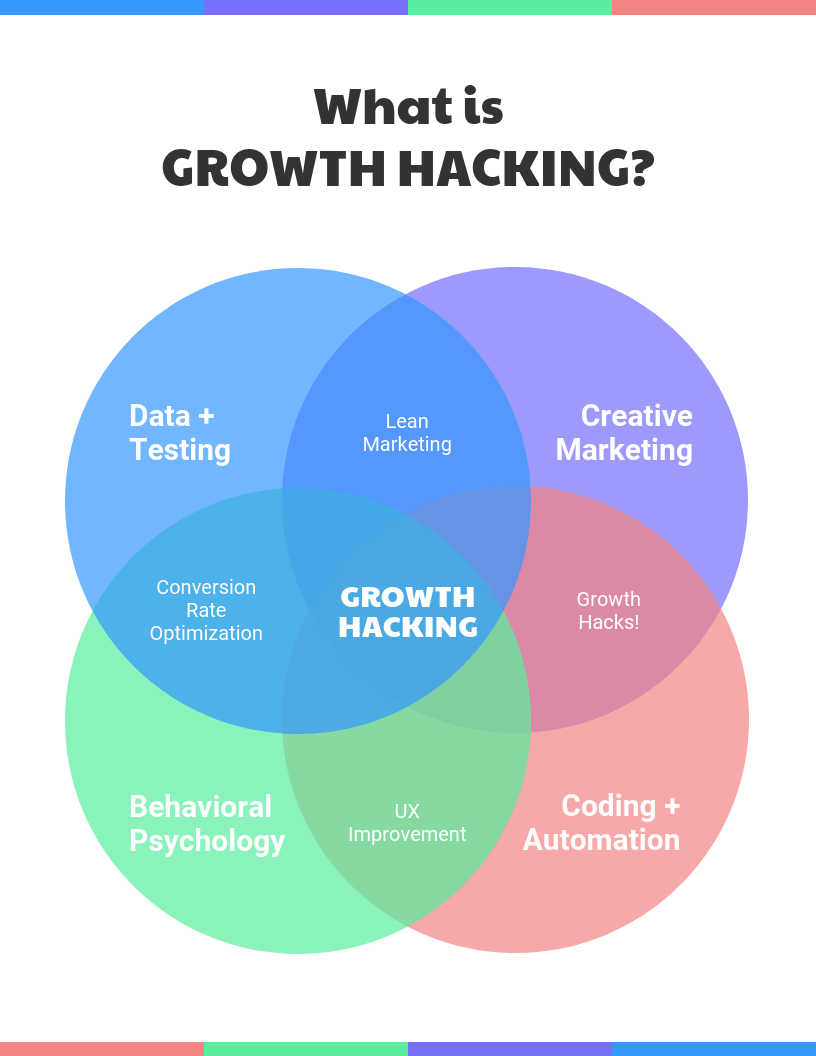A basic Venn diagram maker is one of the most accessible strategies you can create. Start by locating two preselected stocks at the same time, preferably blue-chip or momentum stocks. After that, make a chart with the charting program of your choice, but don't include today's date in it.
When finished, locate both companies on the chart and look for a high and a low price. If available, we recommend looking for the price closest to the stock's 52-week high; otherwise, use any other high in the last year. Once you've located these points on your chart, draw a straight line from one to the other.
Your work is already done if your chart is set up with a line that connects the high and low. However, if it's not, you'll need to add two horizontal lines that separate the high and low into three sections: above the price range, below the price range, and right at the price range. Once this is done, color in all areas above the upper horizontal line and leave all other areas blank. You'll end up with four sections, each representing the percentage of how much price movement took place inside that range.
An average Venn diagram is short-term in nature, though this doesn't mean you can only hold on to it for a few days or weeks. You may want to consider holding on to your investment until the price trend changes direction or begins trending outside the price range. While this is a good strategy for new investors who are in the process of making a Venn diagram, professional investors can also use it.
If you aren't using this strategy already, we recommend that you incorporate it into your repertoire. If you already use this strategy, we recommend switching to a more advanced version that I'll cover in the next section.
Here are the easy steps to creating a Venn diagram example strategy:
Step 1: Find two preselected stocks at the same time.
Finding two preselected stocks means you should find stocks that are already high in value. Be sure to choose companies with similar trending patterns, which means they're either at their highest point or steadily lowering in value.
A company can be steadily dropping if it is entering a bear market or starting to decline after reaching the peak of its prior bull market. The good thing about the Venn diagram math is that it doesn't consider whether the trend in motion is upward or downward; this makes it ideal for investors diversifying their portfolios.
Step 2: Make a chart with the charting program of your choice, but don't include today's date in it.
We recommend generating your chart with notations of length and timing. This will help you identify areas where there were sharp price movements in the past. These are called "vacuum zones" or "vacuum spaces."
Step 3: Locate both companies on the chart and look for a high and a low price.
Highs represent overvaluation, while lows are undervaluation. Price ranges are between these two prices. The primary purpose of the process is to find price levels that indicate overvalued or undervalued assets.
Step 4: Once you've located these points on your chart, draw a straight line from one to the other.
This step will help in identifying price ranges. A price range is a distance between the highest and lowest points on your chart.
Step 5: If your chart is set up with a line that connects the high and low, your work is already done. However, if it's not, you'll need to add two horizontal lines that separate the high and low into three sections: above the price range, below the price range, and right at the price range. Once this is done, color in all areas above the upper horizontal line and leave all other areas blank.
Step 6: You'll end up with four sections, each representing the percentage of how much price movement took place inside that range.
This is how you'll know the percentage of overvaluation or undervaluation represented by each area on your chart.
Step 7: An average blank Venn diagram is short-term in nature, though this doesn't mean you can only hold on to it for a few days or weeks.
You may want to consider holding on to your investment until the price trend changes direction or begins trending outside the price range.
While this is a good strategy for new investors who are still learning to draw Venn diagrams, professional investors can also use it. Most professionals will enter into trades that last anywhere from two weeks to six months; the best part is that you can enter into these investment opportunities at any time during the year.
You don't have to risk everything on one trade, though I recommend investing daily to minimize your risks. If you're not willing to do this with every trade, consider using a smaller amount of money for each trade so it doesn't seem as risky or intimidating.
Step 8: Most investors who use Venngage do so to determine whether an investment is worth making. Once you've found a Venngage that you think can help your portfolio grow, invest in it.
Every Venngage has its own price range; once the Venngage hits this high or low point, there's no need to wait any longer because the Venngage has already reached its peak. This is the time to pull the trigger and invest in it.
Conclusion
As stated earlier, the Venn diagram is an essential tool for investors trying to define price range trends. If you've never drawn one before, it might be easier to use a company like Venngage's software program. However, if you don't mind doing all of the calculations manually, you can efficiently perform them with online tools rather than investing in a subscription.
There are several ways to go about this, but if you're looking for a way that can help you save money, online calculators are the perfect solution because they don't cost anything at all. All of your information is between your two companies and financial institution, which means it's secure and protected from prying eyes.



Add new comment